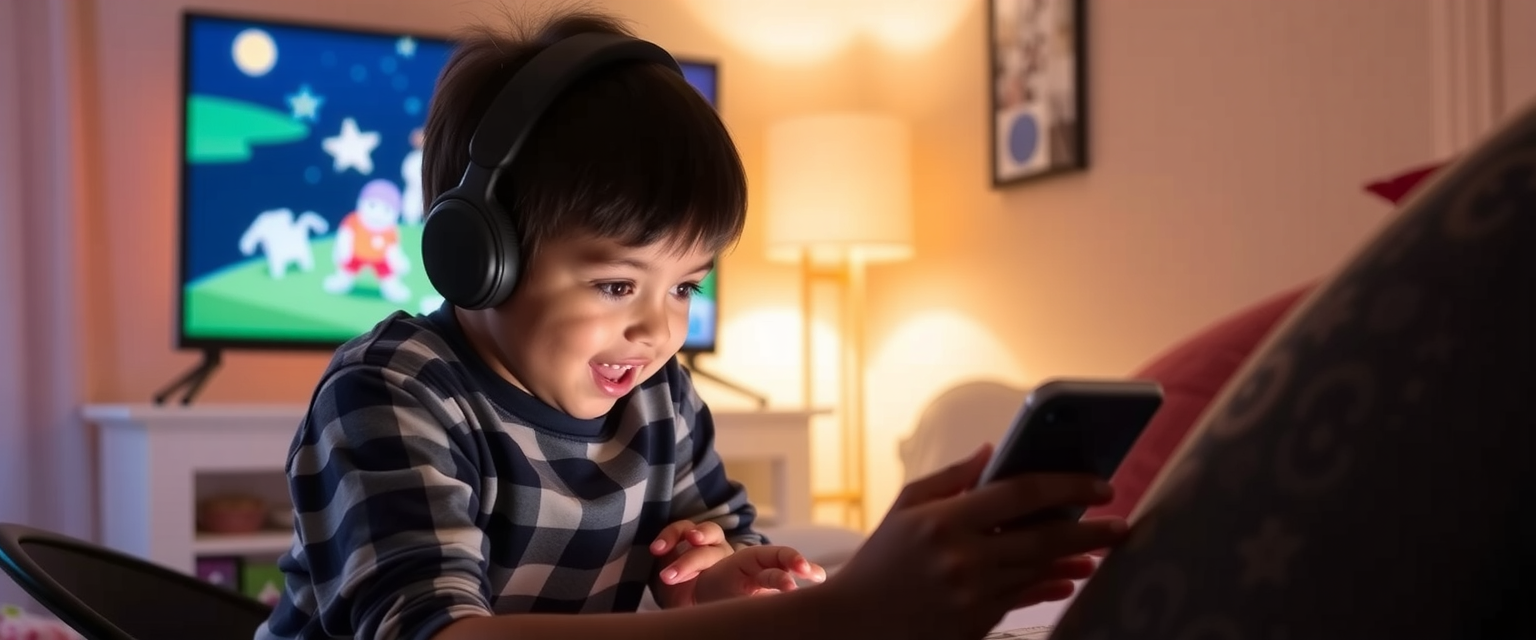In the age of digitalization, screens have become an inseparable part of our lives. Kids are exposed to screens not just at home but also at schools. From online classes to smart boards, from entertainment to social media, while high-tech aids provide us with ample advantages, the harms caused by them are also immense.
Once upon a time, a whole neighbourhood would gather around a single TV. Slowly, times changed, and every household got its television. Today, we live in a world where there is a TV in almost every room, and everyone, even young children, owns a mobile phone. This might seem like a sign of progress, and in many ways, it is. But there is also another side we can’t ignore. Health problems that once troubled people after the age of 60 are now showing up in teenagers and even in kids as young as 4 or 5. At home, children are spending more and more time staring at screens, whether it’s cartoons, YouTube, or mobile games. And when they go to school, things aren’t much different. Today’s schools use smart boards, tablets, and online classes, and all are screen-based learning.
As parents, we often think the worst that can happen is eye strain. But the truth is, too much screen time affects a child much more deeply. It can slow down their physical activity, reduce their imagination, disturb their sleep, and even affect how they learn and grow. Therefore, it is very important for parents to find a way in such a manner that children leverage technology but not at the cost of their health.
That’s exactly what we have explained in this blog: how screen time is shaping our children’s future and what we can do to help them find balance.
The Impact of Prolonged Screen Time on Children
The impact of excessive screen time is not limited to just one area of health, but it also negatively impacts overall health and well-being.
1. Physical Health
Excessive screen time is linked to a sedentary lifestyle, which contributes to obesity and related health issues in kids. A decline in physical health can also negatively influence mental, emotional, and social development. For instance, extended exposure to screens can also lead to eye strain, insomnia, and sometimes irregular sleep patterns due to exposure to blue light emission. Inadequate sleep increases the risk of various health conditions in children.
2. Mental and Emotional Health
Several videos circulating on social media show a child screaming, throwing things, or breaking down when parents attempt to take away their mobile phones. These instances are the clear indicators of the psychological impacts that excessive screen exposure can have on young minds. Prolonged screen exposure has been associated with increased risks of mental health issues such as anxiety, depression, and similar issues. The constant exposure to screens can also affect a child’s ability to focus and regulate emotions.
3. Social Development
Have you ever called your child while they are watching cartoons or playing a mobile game, and they didn’t even respond? That’s because they are so engrossed in mobile games or digital content that everything else fades away. Today’s kids enjoy screens so much that they rarely step outside to play with others. Over time, this can lead to isolation and social withdrawal and make it harder for them to build social skills as they grow. Excessive engagement with screens is replacing outdoor play and peer interaction, hence stopping the development of social skills in kids, which leads to a lack of communication skills and confidence, and moreover, they find difficulty in making friends.
Tips to Manage Children’s Screen Time
1. Demonstrate
There’s a story about Mahatma Gandhiji that beautifully illustrates the power of example. A mother took her son to him, asking, ‘Please tell him not to eat so much jaggery.’ Gandhiji told her to return in a week. When she came back, he spoke to the boy. The mother asked, ‘Why didn’t you just say this last time?’ He replied, ‘Because I hadn’t stopped eating jaggery myself.’ If we want our children to change, we must first become what we want them to learn. Reducing our own screen time is the first step in helping them do the same.
Children mostly mimic their parents. Limiting your screen time and spending time with children sets a good example for them.
2. Include offline activities & cultivate hobbies.
Encourage engaging activities like art & craft, DIY activities, creative writing, reading, drawing & painting, outdoor games, or games that the entire family can play together. Providing these alternatives can reduce screen time.
Nowadays, if kids aren’t watching TV or playing on a mobile, they often complain about being bored. That’s exactly why it’s so important to help them discover new hobbies that can capture their attention and reduce their dependence on screens. But before a hobby becomes a habit, we need to first ignite their curiosity and interest in it. Why is it more important than ever to have a hobby? Find out in our blog.
3. Set clear rules.
Limit usage of screen time to certain hours or a particular duration. Ensure that children strictly obey the rule. Initially you might face difficulty making children follow these rules, but constant effort can make them understand and adhere to the set rules.
Create screen-free areas in the home, such as the dining room or bedroom. This way kids will be encouraged to interact with family members.
4. Leverage parental tools & monitor content access.
Make use of parental control tools available on devices to monitor your children’s screen time. These options can help enforce the rules you have set for them. Ensure that the child is exposed to age-appropriate and educational content that promotes learning and creativity.
5. Make the child understand
Communicate the reasons behind screen time boundaries with your child. Open discussions can help develop understanding and cooperation.
6. Socialize
We have all become so busy in our own lives that we are slowly drifting away from social connections. As a result, our children also tend to stay indoors most of the time, with screens being their only source of entertainment. That’s why it’s important to help kids learn how to socialize and encourage them to play outdoor games with friends. This not only keeps them physically active but also helps reduce their screen time.
7. Go Slow
The key is not to overwhelm children by enforcing all these tips at once. The best approach is to introduce changes slowly and gently so kids can get used to them at their own pace and adapt better and more willingly.
The Takeaway
Cutting screen time is a challenge in today’s digital world, but with some effort and proper interactions, parents can cultivate healthy digital habits in their children. By setting clear screen time rules, introducing alternative activities, and limiting screen time for yourself, you can help your child leverage technology mindfully.

